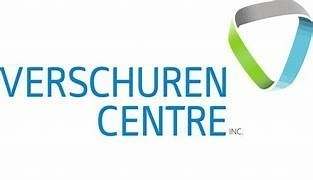

Keynote Presentation: Phyconomy 101: The elegance and legacy of Kathleen Drew’s seminal work on Porphyra sensu lato the raw materials for nori (Japanese: 海苔, Chinese: 海苔; pinyin: hǎitāi, Korean: 김, kim or gim)
Dr Alan T. Critchley, Research Associate, Verschuren Centre, Canada
About the speaker:
Serial seaweed scientist. Started career with invasive species including Sargassum muticum in Europe. Does anyone even recall S. muticum being an introduced species? Worked in South Africa and Namibia on sub-tropical and temperate seaweeds, particularly phycogeography. Interest in seaweed for plant benefits stimulated in Johannesburg. Became experienced in harvesting and cultivation and the industrial processing of seaweed biomass for alginates and carrageenans at Degussa Texturants, Baupte, France. Developed a passion for eucheumatoids (Kappaphycus and Eucheuma spp.) and cultivation of tropical seaweeds generally. Side-stepped into temperate seaweeds in Canada for food, feed and biostimulants. Now Research Associate at the Verschuren Centre which gives him the opportunity to consult and indulge his phyconomic interests. Publications at: https://orcid.org/0000-0003-1704-458X-1704
Organisation:

The Verschuren Centre, Nova Scotia, Canada is committed to providing a collaborative space that enables clients to advance technology cost-effectively, while having the support required on the path to commercialization. The VC’s highly qualified teams have the scientific expertise and the engineering knowhow to meet the specific needs for each client, ultimately increasing their speed to market. The centre has large-scale piloting capacity, highly specialized analytics and product testing labs which provide clients with a capital-efficient solution, bridging their path towards commercialization. The collaborative nature and network of partners nationally and globally connects the VC’s clients within a supportive environment that is unparalleled.
Presentation:
The curious case of Kathleen Drew - seaweed detective! Do you like sushi? Then you owe this British, female phycologist a debt of gratitude! All will be revealed; this is an important piece of seaweed herstory – and an explanation of the intricacies of red algal sex will be provided! Demystifying heteromorphic alternation of generations was a critical step in the commercialization of the bladed, red laver or nori, Porphyra spp. sensu lato. The bladed-phase was indeed already well identified as various species of the valuable, genus Porphyra. In addition, a very different red, filamentous thallus, known for burrowing into rocks and shells, had been identified as the genus and species Conchocelis rosea, However, until Drew’s work, the two had not been associated under one umbrella, as parts of the life cycle of the same genus
In “those days” (early 1950s), ladies could not marry a man in the same university department, so she had to leave! She and her husband established a lab at home. It was due to K. Drew’s precise attention to detail and a simple, yet elegant culture set-up that the significance of the filamentous phase of nori was discovered; burrowed away inside the calcareous matrices of oyster shells, as the missing link in understanding the red alga’s cryptic life cycle. Simple, yet decisive biological observations which led to a very large and economically important seaweed industry.
A one page publication in Nature (1957) stimulated international communication between Dr K. Drew (maiden name) and Japanese scientists enabling them to complete the sexual reproduction cycle of Porphyra spp. at an industrial scale. This required the development of on land nurseries on a huge scale and the mechanical seeding of nets which formed the basis of a massive phyconomic expansion that was later adapted by China and Korea. For this Kathleen Drew Baker (her married name) is venerated annually in Uto, Japan as: “the-Mother-of-the-Sea” by grateful Japanese fisherfolk. The value of the industry reached an economic milestone of USD$1bn in 2010 and was again valued at USD$1.4 bn in 2020. However, all is not well in the phyconomic garden and the on-going presence and impacts of pests and disease in the crop, will be discussed. Nori phyconomy may well be in need another Kathleen Drew-like intervention!

